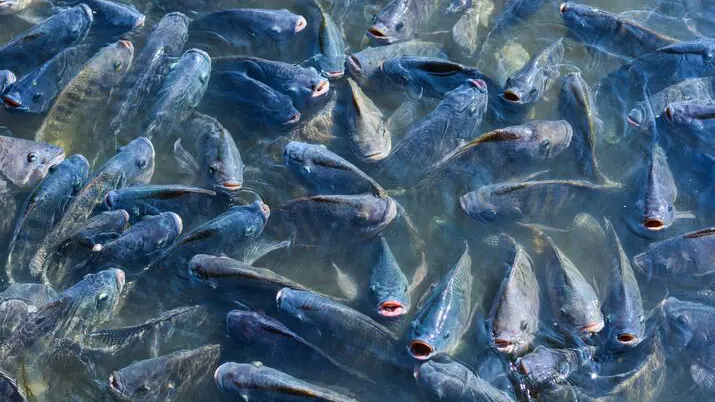Boosting fish health
In their natural habitat fish can experience environmental stressors regularly and seasonally. These stressors that can affect their general wellbeing include, temperature fluctuations, sudden drops in water quality, etc. When fish are fit, they will be able to endure most of these stressors easily. However, with lower fitness, they will have more difficulties when facing these stressors.

High stocking densities
In aquaculture there is an added factor which causes more stress in fish, which the high stocking densities. Cultured fish will not encounter such high densities in the wild, which means they will experience a continuous degree of stress throughout the rearing period. Any added stress, e.g. seasonal temperature fluctuations as encountered during spring/autumn or dry/rainy season, may tip the balance causing fish to become diseased. Many aquaculture species that are reared in places that have seasonal weather changes tend to experience a higher susceptibility for disease during the periods of sudden changes. This is because pathogens will always be present in the rearing water, co-existing, and since pathogens are opportunistic, an environmental stressor will lower the fitness and general health status of fish allowing these opportunistic bacteria to strike and cause disease. The higher stocking densities will not only increase the baseline stress levels but also make it easy for disease to spread within the rearing environment, which can, in the worst case, lead to mass mortalities.
Higher mortalities due to seasonal disease in spring and autumn
Common carp is an aquaculture species that has a high susceptibility to such seasonal diseases, particularly during spring and autumn leading to mass mortalities. The main disease incidence in these two periods is Cyprinid herpes virus (aka Koi herpes virus). This is a disease that can have devastating consequences for reared carp. It affects fish of all sizes and ages, which has severe economic consequences when the fish are reaching bigger sizes during autumn and a lot of investment has been done. The main infection routes are via skin, fins and gills, influenced by weather changes, like those experienced during spring and autumn triggering the virulence of this virus. Many times the virus opens the way for a secondary, often bacterial infections.
Strengthen the natural defenses of the fish
Unfortunately there is no treatment for Cyprinid herpes virus. There are however steps that can be taken to reduce a negative impact. These include adhering to good biosecurity measures, stocking fish early for first selection to take place while the investment is still small, feed carp with high quality feeds and of course strengthening of the natural defenses of fish.
KOUDIJS CARP HEALTH BOOSTER
Koudijs has developed a Carp Health Booster to strengthen the natural defenses of fish. Carp Health Booster is a health concept consisting of various components supporting various health mechanisms. These components include priming of the innate immune system, ensuring pathogens are detected quickly and initiate a faster immune response, improving the intestinal microbiota and binding of gram-negative bacteria, stimulating intestinal mucosa, improving
antioxidant capacity, and finally, improving general health with a selection of vitamins and minerals.
This concept has already been successfully applied in other species such as tilapia. Trials under controlled conditions show improved tolerance to pathogenic disease-causing bacteria, results which have also been confirmed in the field, where customers report improved survival rates during seasonal challenges. Today, the Koudijs health concept is a standard package when fish face adverse conditions affecting farm production.
Do you want to know more?
About the author

Maarten-Jay van Schoonhoven
Do you have any questions or would you like more information? Get in touch with Maarten Jay.
